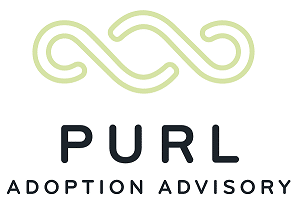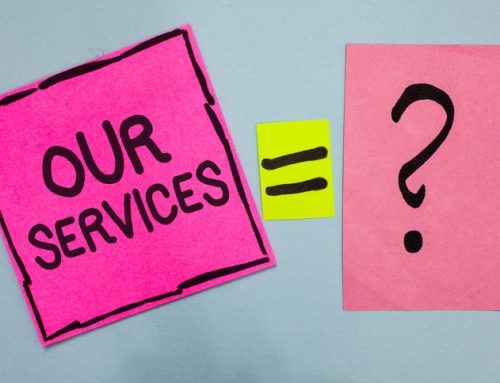
As we mentioned a few weeks ago, we know there are a lot of terms used in the adoption community that the average person doesn’t know or understand, so we’ll be discussing these on our social/blog for the next few months, as time permits.

Agency Adoptions: An agency adoption involves placing or adopting a child through a licensed child-placing agency. In these cases, the birth mother (or parents) signs her consent to the adoption to the agency and the legal custody of that child is held by the agency until finalization occurs, before which the agency consents to the adoptive parents. This type of adoption is the only type allowed in certain states, and is typically required in order for the child to receive certain state subsidies that might be available to a child being adopted. In our experience, agency adoptions can range in cost from $17,000 – $55,000.
Direct Placement Adoptions (often called private or independent adoptions): Direct placement adoptions involve a direct placement between the birth parent(s) and the adoptive parent(s), without the use of an agency and typically without agency fees. In these cases, the expectant parents likely identify adoptive parents on their own through a prospective adoptive parent(s) adoption outreach, or through an adoption attorney, where the law allows. In these adoptions, the birth parent(s) consent directly to the specific adoptive parent(s) they are placing the child with. This type of adoption is not possible in all states. In fact, some states require that an adoption agency be involved in every adoption, even if they did not help match the expectant parent(s) with the prospective adoptive parent(s). In other words, even if the birth mother and the prospective adoptive parent or parents found each other on their own through adoption outreach, in some states an adoption agency will still have to be involved, although the fees are typically less (those are often referred to as “identified adoptions”). The cost of direct placement adoptions range from as low as $4,000 to as high as $50,000, but most are less expensive than the respective agency adoptions in their states.
Regardless which type of adoption you pursue, it is imperative that you have an adoption attorney help you understand the law in your state or the states you plan to operate in BEFORE you begin your adoption journey. At Purl, we connect our prospective adoptive families to adoption professionals in many different states and make sure they understand the differences between the laws in those states. If you don’t use a professional like Purl to identify ethical and experienced adoption professionals, please make sure you are contacting an attorney who is part of the Academy of Adoption and Assisted Reproduction Attorneys (“AAAA”, click that link to search for one in your state). Please understand that there is a BIG difference between family law and adoption law and if someone is experienced in family law they may not necessarily understand adoption law. All the fellows in AAAA are experienced adoption attorneys and should be able to help you understand what is legal and ethical as far as how you can locate an expectant mother considering adoption and what expenses can be paid in an adoption and can help guide you to other reputable professionals.
For a glossary of other adoption terms, please check out a post we made a few years ago on the subject here.

As we mentioned a few weeks ago, we know there are a lot of terms used in the adoption community that the average person doesn’t know or understand, so we’ll be discussing these on our social/blog for the next few months, as time permits.

Agency Adoptions: An agency adoption involves placing or adopting a child through a licensed child-placing agency. In these cases, the birth mother (or parents) signs her consent to the adoption to the agency and the legal custody of that child is held by the agency until finalization occurs, before which the agency consents to the adoptive parents. This type of adoption is the only type allowed in certain states, and is typically required in order for the child to receive certain state subsidies that might be available to a child being adopted. In our experience, agency adoptions can range in cost from $17,000 – $55,000.
Direct Placement Adoptions (often called private or independent adoptions): Direct placement adoptions involve a direct placement between the birth parent(s) and the adoptive parent(s), without the use of an agency and typically without agency fees. In these cases, the expectant parents likely identify adoptive parents on their own through a prospective adoptive parent(s) adoption outreach, or through an adoption attorney, where the law allows. In these adoptions, the birth parent(s) consent directly to the specific adoptive parent(s) they are placing the child with. This type of adoption is not possible in all states. In fact, some states require that an adoption agency be involved in every adoption, even if they did not help match the expectant parent(s) with the prospective adoptive parent(s). In other words, even if the birth mother and the prospective adoptive parent or parents found each other on their own through adoption outreach, in some states an adoption agency will still have to be involved, although the fees are typically less (those are often referred to as “identified adoptions”). The cost of direct placement adoptions range from as low as $4,000 to as high as $50,000, but most are less expensive than the respective agency adoptions in their states.
Regardless which type of adoption you pursue, it is imperative that you have an adoption attorney help you understand the law in your state or the states you plan to operate in BEFORE you begin your adoption journey. At Purl, we connect our prospective adoptive families to adoption professionals in many different states and make sure they understand the differences between the laws in those states. If you don’t use a professional like Purl to identify ethical and experienced adoption professionals, please make sure you are contacting an attorney who is part of the Academy of Adoption and Assisted Reproduction Attorneys (“AAAA”, click that link to search for one in your state). Please understand that there is a BIG difference between family law and adoption law and if someone is experienced in family law they may not necessarily understand adoption law. All the fellows in AAAA are experienced adoption attorneys and should be able to help you understand what is legal and ethical as far as how you can locate an expectant mother considering adoption and what expenses can be paid in an adoption and can help guide you to other reputable professionals.
For a glossary of other adoption terms, please check out a post we made a few years ago on the subject here.



